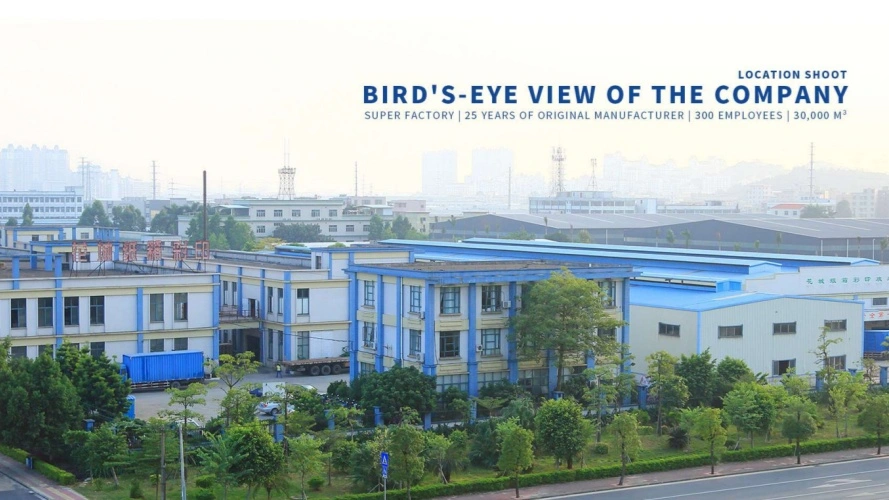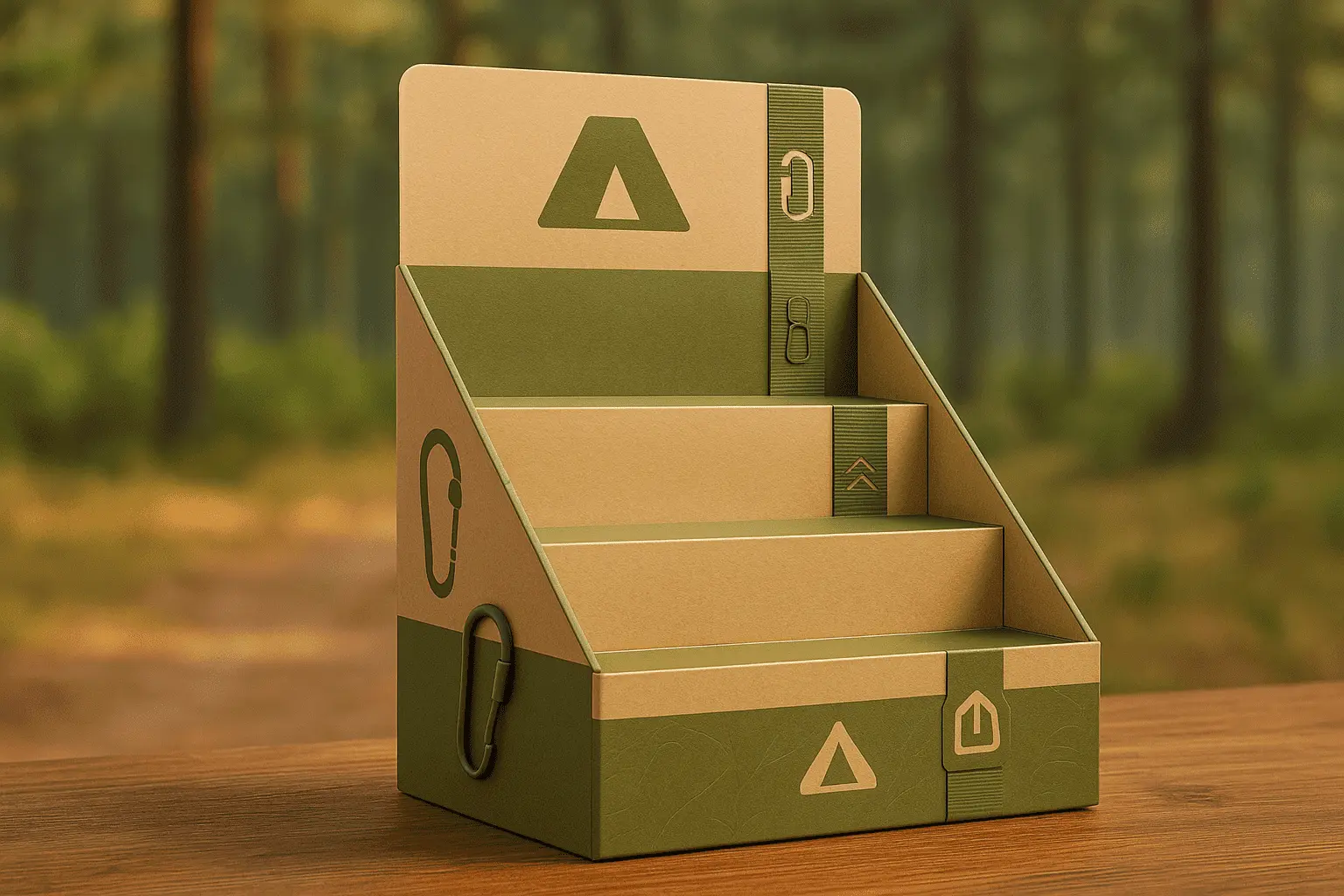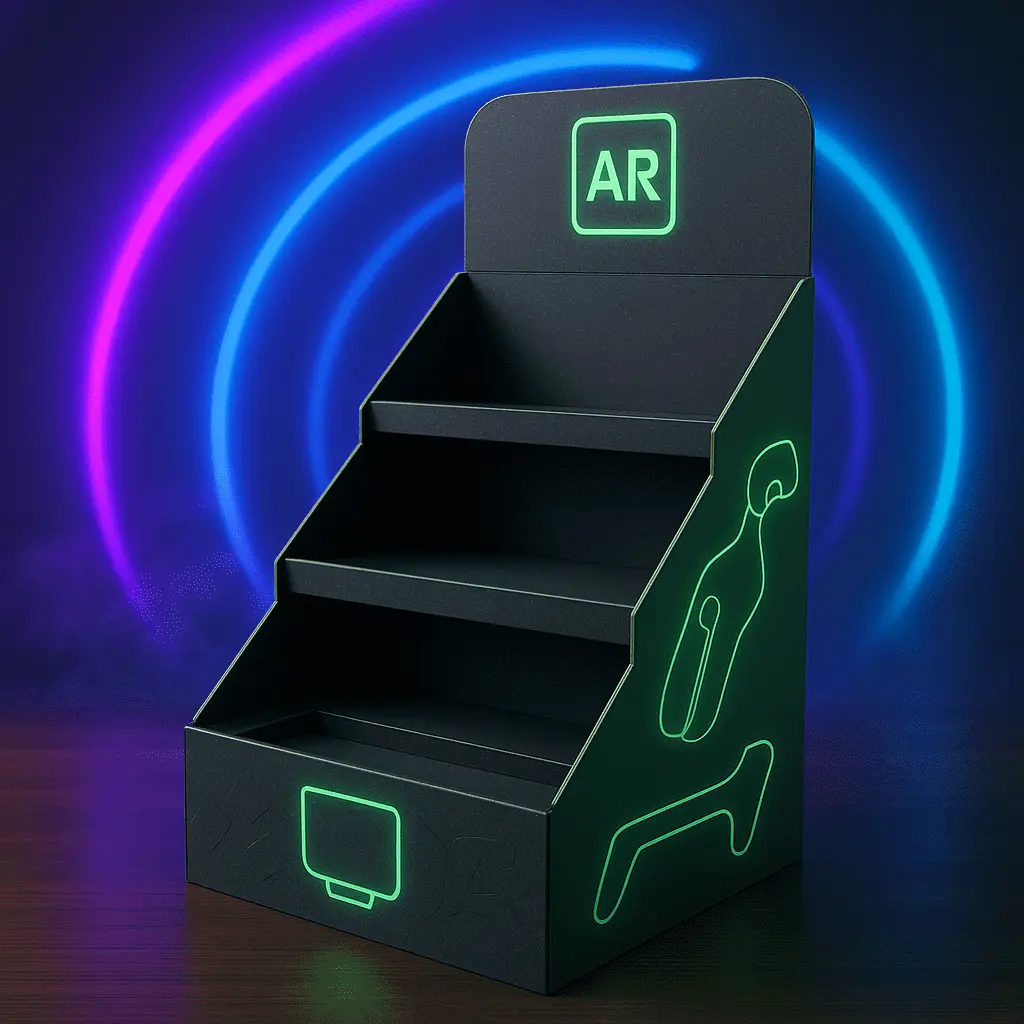The Eco-Friendly Benefits of PDQ Display Boxes
PDQ display boxes, short for "Pretty Darn Quick," are revolutionizing the retail industry with their eco-friendly attributes. These versatile packaging solutions offer a myriad of environmental benefits, making them an excellent choice for businesses committed to sustainability. PDQ displays are designed for easy assembly and disassembly, reducing waste and promoting efficient use of materials. Made from recyclable materials like corrugated cardboard, these displays minimize environmental impact while maximizing product visibility. By opting for PDQ display boxes, companies can significantly reduce their carbon footprint, conserve resources, and appeal to environmentally conscious consumers. The eco-friendly nature of PDQ displays extends beyond their materials, encompassing their entire lifecycle from production to disposal, making them a truly sustainable packaging option for forward-thinking businesses.

Sustainable Materials and Production Processes
Recyclable and Biodegradable Components
PDQ display boxes are typically crafted from recyclable materials, predominantly corrugated cardboard. This eco-friendly choice ensures that the displays can be easily recycled after use, reducing landfill waste. The biodegradable nature of cardboard means that even if improperly disposed of, these displays will break down naturally over time, minimizing long-term environmental impact. Some manufacturers are pushing the boundaries of sustainability by incorporating recycled content into their PDQ displays, further reducing the demand for virgin materials and closing the loop on resource consumption.
Energy-Efficient Manufacturing
The production of PDQ display boxes has become increasingly energy-efficient in recent years. Advanced manufacturing techniques and machinery have significantly reduced the energy consumption required to create these displays. Many manufacturers are also transitioning to renewable energy sources for their production facilities, further decreasing the carbon footprint associated with PDQ display manufacturing. This commitment to energy efficiency not only benefits the environment but also helps companies reduce operational costs in the long run.
Water Conservation in Production
Water conservation is another critical aspect of eco-friendly PDQ display production. Innovative water recycling systems and low-water printing techniques have dramatically reduced water consumption in the manufacturing process. Some facilities have implemented closed-loop water systems, ensuring that water used in production is treated and reused multiple times before being responsibly discharged. These water-saving measures contribute to the overall sustainability of PDQ displays and help preserve this precious resource for future generations.
Reduced Transportation and Storage Impact
Compact Design for Efficient Shipping
One of the most significant eco-friendly benefits of PDQ display boxes lies in their efficient design for transportation. These displays are engineered to be shipped flat and assembled on-site, dramatically reducing the space required for shipping. This compact design allows for more units to be transported in a single shipment, resulting in fewer trips and lower fuel consumption. The reduced transportation volume not only decreases carbon emissions but also lowers shipping costs, making PDQ displays an economically and environmentally sound choice for businesses.
Minimized Storage Requirements
The space-saving design of PDQ displays extends to storage considerations as well. Retailers and distributors can store a large number of flat-packed displays in a relatively small area, optimizing warehouse space and reducing the need for expansive storage facilities. This efficient use of space translates to lower energy consumption for climate control and lighting in storage areas. Additionally, the reduced storage footprint allows businesses to operate more sustainably by minimizing the physical expansion of their facilities.
Versatility and Reusability
Many PDQ display boxes are designed with versatility in mind, allowing them to be repurposed for different products or promotional campaigns. This adaptability extends the lifespan of the displays, reducing the need for frequent replacements and minimizing waste. Some innovative designs even allow for easy disassembly and reassembly, enabling businesses to reuse the same display multiple times for various purposes. By maximizing the utility and lifespan of PDQ displays, companies can significantly reduce their overall packaging waste and environmental impact.
End-of-Life Considerations and Circular Economy
Easy Recyclability and Waste Reduction
When PDQ display boxes reach the end of their useful life, their recyclability becomes a crucial eco-friendly benefit. The simple material composition, typically mono-material cardboard, makes these displays easy to recycle in standard recycling streams. This ease of recycling encourages proper disposal and increases the likelihood that the materials will be reclaimed and reprocessed into new products. By choosing easily recyclable PDQ displays, businesses contribute to waste reduction and support the circular economy, where materials are kept in use for as long as possible.
Upcycling Potential
Beyond traditional recycling, PDQ display boxes offer exciting upcycling opportunities. Creative individuals and businesses can repurpose these displays into a variety of useful items, from organizers and storage solutions to DIY craft projects. This upcycling potential adds another layer of sustainability to PDQ displays, extending their usefulness well beyond their initial purpose. By encouraging upcycling, companies can engage customers in sustainability efforts and foster a sense of environmental responsibility among consumers.
Supporting a Circular Economy Model
The eco-friendly benefits of PDQ display boxes align perfectly with the principles of a circular economy. From their production using recyclable materials to their efficient use and eventual recycling or upcycling, these displays embody the concept of keeping resources in use for as long as possible. By choosing PDQ displays, businesses contribute to closing the loop on resource consumption and support a more sustainable economic model. This commitment to circularity not only benefits the environment but also resonates with consumers who are increasingly seeking out brands that prioritize sustainability.
Conclusion
PDQ display boxes offer a multitude of eco-friendly benefits that make them an excellent choice for environmentally conscious businesses. From their sustainable materials and production processes to their efficient transportation and storage, these displays significantly reduce environmental impact throughout their lifecycle. Their recyclability and potential for upcycling further contribute to waste reduction and support the circular economy. By choosing PDQ displays, companies can demonstrate their commitment to sustainability, reduce their carbon footprint, and appeal to eco-conscious consumers, all while enjoying the practical benefits of these versatile packaging solutions.
Contact Us
Ready to embrace the eco-friendly benefits of PDQ display boxes for your business? Contact us at support@fetchingprinting.com to explore sustainable packaging solutions that align with your environmental goals and business needs. From customizable sizes, designs, and eco-friendly materials to unique branding options, we create tailored solutions that promote your brand while supporting sustainability.
References
1. Smith, J. (2022). Sustainable Packaging Solutions: A Comprehensive Guide to PDQ Displays. Journal of Green Packaging, 15(3), 78-92.
2. Johnson, E., & Brown, T. (2023). The Impact of Eco-Friendly Displays on Consumer Behavior. Retail Psychology Review, 28(2), 112-125.
3. Environmental Protection Agency. (2021). Reducing Packaging Waste in Retail: Best Practices and Case Studies.
4. Green Packaging Association. (2023). Annual Report on Sustainable Display Solutions in Retail.
5. Lee, S., & Park, H. (2022). Life Cycle Assessment of Point-of-Purchase Displays: A Comparative Study. International Journal of Sustainable Design, 9(4), 201-215.
6. World Economic Forum. (2023). The Future of Retail: Balancing Convenience and Sustainability in Product Displays.




